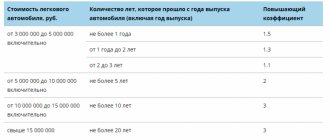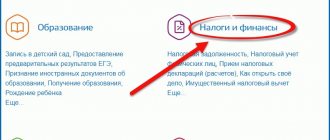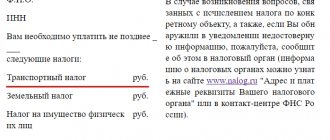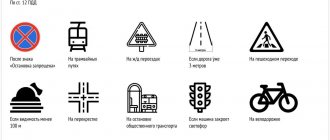Any state wants to remain in a stable economic position, and for this its budget must necessarily have a positive value. This means that there should be much more income and infusions than expenses, which, unfortunately, does not happen in all countries and not always. The state is frantically looking for ways to qualitatively “patch” holes in the budget so as not to accumulate external debts, which again fall on the shoulders of taxpayers, which is why in 2014 it was decided to introduce a previously non-existent luxury tax. Since then, rates for this type of tax have regularly increased, and the rules have become stricter, so it wouldn’t hurt to find out which cars fall under the luxury tax in 2021 in order to finally clarify the situation.
Meaning and functions of luxury car tax
Many were bewildered by the fact that the Tax Code of the Russian Federation did not and still does not mention any law on luxury tax, but its actual effect can be felt by every citizen who purchases a certain type, category and brand of car. In 2014, there were only about three hundred models subject to the tax, then their number grew to seven hundred, and in 2021, about a thousand makes and models of vehicles can be found on the list of those that are rightfully considered luxury.
Important
In fact, there is no special and separate tax on luxury cars, it is a popular name. There are also increasing coefficients for the transport tax, which has long been the subject of debate and controversy in the government. The TN value for luxury cars is calculated by taking into account the power of the car, its cost, year of manufacture and brand, as well as the region in which it will be registered.
Vehicles that are subject to luxury tax include not only passenger cars, but also water and air vehicles (helicopters, airplanes, yachts, boats, motor boats, etc.). Previously, it was assumed that this type of state tax collection would be aimed at creating a kind of reserve financial fund, but at this time this idea is not supported by anything legislatively, and the tax under discussion performs the following functions:
- Anti-corruption activities are financed partly from these fees.
- Regulating the flow and distribution of budget funds, supporting the country’s economy in general.
- Improving the quality of taxes to fill government coffers.
- Maintenance, repair, maintenance, as well as construction of new infrastructure facilities.
The introduction of a new fee only has a positive effect on the economic situation of the state, in general. As for the rest, I would like to respond to those who are dissatisfied with the good old Russian proverb that if you love to ride, you should not forget that you will also have to carry the sled. It makes sense to present a list of cars to which the luxury tax applies and the formula for calculating it in order to dispel all the secrets and veils, this is what we will do in our article.
Transport tax rate for cars in Moscow for 2020
| Name of taxable object | Rate (RUB) |
| Passenger cars with engine power (transport tax is calculated for each horsepower of the vehicle): | |
| up to 100 l. With. (up to 73.55 kW) inclusive | 12 |
| over 100 hp up to 125 hp (over 73.55 kW to 91.94 kW) inclusive | 25 |
| over 125 hp up to 150 hp (over 91.94 kW to 110.33 kW) inclusive | 35 |
| over 150 hp up to 175 hp (over 110.33 kW to 128.7 kW) inclusive | 45 |
| over 175 hp up to 200 hp (over 128.7 kW to 147.1 kW) inclusive | 50 |
| over 200 hp up to 225 hp (over 147.1 kW to 165.5 kW) inclusive | 65 |
| over 225 hp up to 250 hp (over 165.5 kW to 183.9 kW) inclusive | 75 |
| over 250 hp (over 183.9 kW) | 150 |
| Motorcycles and scooters with engine power (transport tax is calculated for each horsepower): | |
| up to 20 l. With. (up to 14.7 kW) inclusive | 7 |
| over 20 l. With. up to 35 l. With. (over 14.7 kW to 25.74 kW) inclusive | 15 |
| over 35 l. With. (over 25.74 kW) | 50 |
| Buses with engine power (per horsepower): | |
| up to 110 hp (up to 80.9 kW) inclusive | 15 |
| over 110 hp up to 200 hp (over 80.9 kW to 147.1 kW) inclusive | 26 |
| over 200 l. With. (over 147.1 kW) | 55 |
| Trucks with engine power (per horsepower): | |
| up to 100 l. With. (up to 73.55 kW) inclusive | 15 |
| over 100 l. With. up to 150 l. With. (over 73.55 kW to 110.33 kW) inclusive | 26 |
| over 150 l. With. up to 200 l. With. (over 110.33 kW to 147.1 kW) inclusive | 38 |
| over 200 l. With. up to 250 l. With. (over 147.1 kW to 183.9 kW) inclusive | 55 |
| over 250 l. With. (over 183.9 kW) | 70 |
| Other self-propelled vehicles, pneumatic and tracked machines and mechanisms (per horsepower) | 25 |
| Snowmobiles, motor sleighs with engine power (per horsepower): | |
| up to 50 l. With. (up to 36.77 kW) inclusive | 25 |
| over 50 l. With. (over 36.77 kW) | 50 |
| Boats, motor boats and other water vehicles with engine power (per horsepower): | |
| up to 100 l. With. (up to 73.55 kW) inclusive | 100 |
| over 100 l. With. (over 73.55 kW) | 200 |
| Yachts and other sailing-motor vessels with engine power (per horsepower): | |
| up to 100 l. With. (up to 73.55 kW) inclusive | 200 |
| over 100 l. With. (over 73.55 kW) | 400 |
| Jet skis with engine power (per horsepower): | |
| up to 100 l. With. (up to 73.55 kW) inclusive | 250 |
| over 100 l. With. (over 73.55 kW) | 500 |
| Non-self-propelled (towed) vessels for which gross tonnage is determined (transport tax is calculated for each registered ton of gross tonnage) | 200 |
| Airplanes, helicopters and other aircraft with engines (per horsepower) | 250 |
| Airplanes with jet engines (per kilogram of thrust) | 200 |
| Other water and air vehicles without engines (per vehicle unit) | 2000 |
Increasing coefficients
So, if the luxury tax is not a separate fee, which we have already found out, it would not hurt to find out how it can be calculated or at least roughly estimated. It’s worth starting with those same increasing coefficients to the basic transport tax rates, which we already mentioned just above. Just two factors-indicators will significantly influence the size of such a multiplier:
- Year of manufacture of the vehicle.
- The cost of the car, according to the official version, in a new form.
By analyzing the information that can easily be found on the website of the Ministry of Industry and Trade, you can easily understand these increasing coefficients and therefore calculate the required tax payment when purchasing and operating a particular luxury car.
From 3 to 5 million rubles
- The coefficient for vehicles less than one year old will be 1.5 units.
- For a car whose service life barely reaches two years – 1.3 units.
- For cars older than three years – 1.1 units.
5 to 10 million
- The size of the increasing coefficient will be exactly 2.0 units if its service life from the date of issue does not exceed five years.
From 10 to 15 million rubles
- If the vehicle is no more than ten years old, the increase coefficient will be 3 units.
Over 15 million rubles
- In this case, the increasing coefficient remains exactly the same as in the previous category and will be exactly three. However, you will have to pay luxury tax for such a car not for ten, but for two decades.
Horsepower tax
> ARTICLES > Horsepower tax
Every year, each motorist transfers a certain amount to the state budget for the use of his vehicle.
Let's figure out what tax on horsepower is paid now: how to correctly calculate its size depending on the horsepower, who is obliged to part with the money and who is exempt from payment, until when the tax must be paid.
Who is required to make payments?
In this case, the law is simple: who owns it pays, all payments will be issued to the owner of the vehicle. Cases when a car is registered in the name of one person, and another person drives it by proxy, are ignored by the Tax Code (the main law that determines the amount of all taxes).
An exception is made only for those owners who transferred the car to other hands before the end of July 2002. If a power of attorney was signed, allowing another person to both own and manage the car, payment documents will be sent to him. But at the same time, the owner must “notify the tax authority” about the transfer.
What vehicles do you not need to pay for?
You will have to pay contributions for any registered car, with the exception of:
- Passenger vehicles for disabled people, if they are specially equipped.
- Cars with a low-power engine - up to 100 horsepower - subject to their issue by the social security service and the presence of legally issued documents.
- A vehicle that was stolen from the owner and we still haven’t found. In order to be exempt from payment, you must bring to the tax office a document about the theft (with the obligatory date of the incident), issued by the search authorities.
- Equipment that is used by penal institutions, as well as internal affairs agencies, the fire service, and the Ministry of Defense.
Payment exemptions
There are no federal benefits in this case. The state allowed the regions to set their own rules. Therefore, in many areas, the following people do not pay transport tax (the official name for contributions for horsepower):
- Heroes of the Soviet Union;
- Persons who are holders of the Order of Glory;
- Heroes of Russia;
- Honorary people of the region;
- Car enthusiasts with low-power cars - up to 70 horsepower;
- Pensioners by age.
What does transport tax consist of?
Four parameters influence the amount of accruals:
1. Tax base.
It is the power of the car indicated in the documents. This is the main parameter influencing the amount of deductions. Usually the number of horsepower is indicated in the title.
How to determine horsepower
It happens that technical documents do not contain information about horsepower, but there is information about kilowatts. For calculations you need to convert kW to hp. Multiply the number of kilowatts by 1.35962 (this is the "volume" of one kW in hp). Round the resulting number so that there are two decimal places left after the decimal point. For example, 100 hp. multiply by 1.35962, we get 135.962, round to 135.96.
2. Tax rate.
Its dimensions are given in the Tax Code (Article 361). At the same time, specific values are set by regional authorities, and they can differ from those recommended by law by no more than ten times, both in terms of increase and decrease. But for cars whose engine is less than 150 horsepower or equal to this number, only an increase is applied.
This year's odds
- for cars with hp below 100 – 2.5;
- above 100, but below 150 – 3.5;
- above but below 200 – 5;
- from 200 to 250 – 7.5;
- more than 250 – 15.
These indicators are used if no tax regulations have been adopted at the regional level.
3. Tenure periods.
Only those months during which the car was in your ownership are counted: if you used it for 12 months, you pay for the whole year. If on September 1 the vehicle was registered by a different owner, then you will pay for 8 months, not 12. The situation is similar with new cars - months from the date of purchase are taken into account.
4. Increase factor.
This is a kind of tax on wealth. You have to pay extra for the pleasure of driving luxury cars. Now transport, the price of which exceeds 3 million rubles, is considered expensive. Thus, for prestigious cars costing from 3 to 5 million, a coefficient of 1.1 is used, with increasing prices the values change upward and increase.
What cars does it apply to?
Every year the country establishes a new list of funds for which you need to pay, taking into account the increase. It is prepared and posted on the Internet by the Russian Ministry of Industry and Trade no later than March 1. Thus, the list of “cool” cars for 2015 was posted on the website of this Ministry on February 27. Tax for 2015 is calculated taking into account this document.
How to Calculate How Much Horsepower Tax to Pay
The formula is simple: we multiply together all the parameters that make up the tax: base, rate, terms and coefficient (for “regular” cars it is equal to one). The amount received is your transport tax for one calendar year.
When to pay
The deadline for payment is set by law, October 1. It is impossible to forget about contributions - tax services regularly and in advance send out notifications to every citizen. All underpayments, penalties and overpayments are also taken into account; payment slips must contain information about them.
Attention! Recalculation is possible only for the three previous years. If in 2021 an underpayment for 2012 was discovered, you are not obligated to pay it.
| Click to remember us, thank you |
Source: https://kasko-vse.ru/nalog-na-loshadinyye-sily
Formula for calculating luxury tax
Having at hand the above tariff schedule, or, rather, a list of increasing coefficients, as well as having found out the basic calculation formula and several criteria for the car itself, you can calculate how much you will have to pay annually, therefore, draw a conclusion whether it is worth purchasing such an expensive vehicle or better will limit itself to something simpler.
Mdv x NS x PC = PTN
Here's a detailed breakdown:
PTN is an increased transport tax, that is, the same luxury tax that you will have to pay in the end.
Mdv is the engine power of the car you have chosen in horsepower.
TS is the base tax rate, which can vary significantly and significantly in different regions.
PC is an increasing factor that should be taken into account based on the year the car was produced, as well as its real value, according to the Ministry of Industry and Trade.
Do I need to make higher advance payments?
According to paragraph 2 of Art. 363 of the Tax Code of the Russian Federation , payers of transport tax that are organizations during the tax period (after each reporting period) pay advance payments for the specified tax, unless otherwise provided by the laws of the constituent entities of the Russian Federation.
Tax payment is made at the end of the tax period. (Remember: the tax period for transport tax is a calendar year, the reporting periods are the I, II and III quarters.) Based on clause 2.1 of Art. 362 of the Tax Code of the Russian Federation, the amount of the advance payment at the end of each reporting period is 1/4 of the product of the corresponding tax base and tax rate. For passenger cars, the tax base is determined as the vehicle engine power in horsepower. The tax rate is set in rubles.
As for the amount of transport tax payable to the budget at the end of the tax period, it is calculated as the difference between the calculated tax amount and the amounts of advance tax payments payable during the tax period. In addition, in paragraph 2 of Art. 362 of the Tax Code of the Russian Federation (which establishes the procedure for calculating the amount of tax) lists cases when the calculation of the amount of transport tax must be carried out taking into account the increasing coefficient. Thus, the use of an increasing coefficient is provided only when calculating transport tax payable at the end of the tax period (calendar year); the calculation of advance payments is made without taking into account increasing coefficients. Officials have already focused their attention on this important point ( Letter of the Ministry of Finance of the Russian Federation dated April 11, 2014 No. 03-05-04-01/16508 , brought to the attention of the Federal Tax Service for the constituent entities of the Russian Federation by Letter of the Federal Tax Service of the Russian Federation dated April 23, 2014 No. BS-4-11/7781 , Letter of the Federal Tax Service of the Russian Federation dated March 24, 2014 No. BS-4-11/5316 , Information of the Federal Tax Service of the Russian Federation “On clarification of the procedure for calculating advance payments for transport tax for expensive cars” ).
At the same time, financiers pay attention: as part of the amendments to the legislation on taxes and fees, corresponding amendments will be prepared to clause 2.1 of Art. 362 of the Tax Code of the Russian Federation in conjunction with the provisions of paragraph 2 of Art. 362 Tax Code of the Russian Federation .
Key moment
For the corresponding passenger cars, the transport tax at the end of the tax period is calculated taking into account increasing factors. But obligations to make advance payments are established without the use of such coefficients.
Cars eligible for luxury tax in 2021
The main reason for increasing tax deductions lies in the financial plane, that is, the higher the price of a car, the more you will need to pay, at least one and a half, or even two or even three times. This means that even if you buy a car secondhand and its cost is no more than three million rubles, but the official price in the Ministry of Industry and Trade catalog turns out to be much higher, you will have to pay tax, there is no way to hide from this and there is no escape.
Therefore, it is very important to monitor the replenishment of the list of luxury cars, which is growing with every goal, due to soaring inflation and an increase in all prices, not to mention luxury vehicles. Most brands whose models are subject to luxury tax can be limited to a small list:
- Jaguar.
- Audi.
- Land Rover.
- Mercedes-Benz.
- Lamborghini.
- BMW.
- Chevrolet.
- Cadillac.
- Lexus.
- Aston Martin.
- Bugatti.
- Rolls-Royce and others.
You can directly visit our website and check it regularly before purchasing. For convenience, it first lists cars that cost three million and more, then those cars that cost five, ten and fifteen million rubles. The list is constantly being updated, so it is worth closely monitoring the changes so as not to fall into a network of debts, since if you are in debt, penalties may increase, although not large, but for large amounts, very noticeable.
Calculation of transport tax for legal entities
Legal entities are required to calculate the transport tax for each car independently and make quarterly advance payments (payments of 1/4 to the Federal Tax Service of the total amount of all vehicles of the department). If the organization owns an expensive car included in the special. list of the Ministry of Industry and Trade of the Russian Federation, then advance payments by a legal entity are paid immediately taking into account the established increasing coefficient (coefficient for a luxury car).
At the end of the calendar year, the remaining tax must be paid by February 1 of the year following the reporting year. The calculated transport tax must be paid within the deadlines established by law for submitting tax returns.
Benefits, discounts and concessions
This type of tax turns out to be really significant and the amounts are far from childish. You can get rid of such extortions over time, when your car is no longer new, but will serve three, five or ten to twenty years faithfully. True, by then everything may change. It is, of course, possible to avoid paying luxury tax on cars in 2021, but to do this you need to belong to one of the population groups listed below, and also document your right to such a discount.
- Parents or guardians of large families do not pay luxury tax and, moreover, may not pay transport tax at all in most regions of our Motherland, about which there is a useful article on the website.
- Veterans of WWII and UBI do not pay luxury tax, even when they own expensive vehicles.
- Disabled people of the first and second groups.
- Recipients of the Order of Glory of any degree, as well as holders of the title of Hero of the Soviet Union and the Russian Federation.
- Liquidators of man-made and radiation accidents and disasters, as well as those affected by them.
- Persons with special services to the Motherland, astronauts and others.
In some regions of our huge country, pensioners are partially or completely exempt from transport tax; therefore, they will not pay luxury tax. This information needs to be constantly checked, because local authorities may change the rules and system for calculating subsidies and providing benefits annually.
Let's sum it up
There are several other cases where the luxury tax is not levied on car owners, and some of them are actively used by some financially unscrupulous individuals. So, taxes are not charged at all on a wanted car, that is, neither a transport tax nor one that relates to luxury. It is unlikely that you will be able to cheat here, since there must be official confirmation from the police that the car is indeed stolen and is wanted.
The second option is to register the car not to the real owner, but to an organization, for example, a society for the blind and similar groups. The third method is based on the fact that people with disabilities do not pay luxury taxes, and therefore vehicles converted for the needs of a person with special needs and disabilities are not subject to such taxes. It is clear that hiding income and evading taxes will not bring anything good and in the end, most likely, the truth will come out, then you can end up not only with serious debts, but also with a prison sentence, so it is better to avoid such incidents and live honestly.
Benefits provided for payment of transport tax
Adhering to the rules of regional laws, the following are exempt from paying transport tax:
- Veterans and disabled people of the Great Patriotic War, Heroes of the Soviet Union, Heroes of Russia and other groups of taxpayers.
- For Moscow - representatives (one of two parents) of large families.
- For St. Petersburg - only one of the parents of a family with at least four minor children.
- A certain number of citizens are provided with a transport tax benefit, provided that their vehicle is domestically produced and has an engine with a capacity of up to 150 hp.
| Category of taxpayers for whom the benefit is established | The corresponding article (clause) of the law of the subject of the Russian Federation | Grounds for granting benefits | Size | Unit change | Conditions for providing benefits | FL, LE, IP |
| organizations providing services for the transportation of passengers by public urban passenger transport | subparagraph 1 of paragraph 1 of article 4 | provisions of the constituent documents (charter, regulations) defining passenger transportation as the main type of activity, the purpose of creating the organization; availability of a valid license for passenger transportation | 100 | % | Calculation of transport tax on vehicles transporting passengers by public urban passenger transport (except taxis) (subclause 1 of clause 1, article 4). Vehicles exempt from taxation include vehicles that use uniform conditions for the transportation of passengers at uniform fares established by the executive authorities of the city of Moscow. Calculate transport tax taking into account the provision of all travel benefits approved in the prescribed manner; benefits do not apply to water, air vehicles, snowmobiles and motor sleighs (clause 3 of article 4) | Legal entity |
| residents of the special economic zone of technology-innovation type "Zelenograd" | subparagraph 2 of paragraph 1 of article 4 | extract from the register of residents of the special economic zone, issued by the management body of the special economic zone | 100 | % | for vehicles registered to residents from the moment they were included in the register of residents of the special economic zone. The benefit is provided for a period of five years, starting from the month of registration of the vehicle (subparagraph 2 of paragraph 1 of Article 4); benefits do not apply to water, air vehicles, snowmobiles and motor sleighs (clause 3 of article 4) | Legal entity |
| Heroes of the Soviet Union, Heroes of the Russian Federation, citizens awarded the Order of Glory of three degrees, | subparagraph 3 of paragraph 1 of article 4 | statement; Hero's book or order book | 100 | % | one vehicle each with an engine power of up to 200 hp. (inclusive) (subclause 3 of clause 1 of Article 4, clause 5 of Article 4), if there is a right to receive benefits on several grounds, the benefit is provided on one basis at the choice of the taxpayer (clause 2 of Article 4), benefits do not apply to water and air vehicles , snowmobiles and motor sleighs (clause 3 of article 4) | FL IP |
| veterans of the Great Patriotic War, disabled people of the Great Patriotic War; | subparagraph 4 of paragraph 1 of article 4 | statement; standard certificate | 100 | % | Calculation of transport tax for one vehicle with an engine power of up to 200 hp. (inclusive) (subclause 4 of clause 1 of Article 4, clause 5 of Article 4), if there is a right to receive benefits on several grounds, the benefit is provided on one basis at the choice of the taxpayer (clause 2 of Article 4); benefits do not apply to water, air vehicles, snowmobiles and motor sleighs (clause 3 of article 4) | FL IP |
| combat veterans, disabled combat veterans | subparagraph 5 of paragraph 1 of article 4 | statement; certificate or certificate of entitlement to benefits of the established form | 100 | % | one vehicle each with an engine power of up to 200 hp. (inclusive) (subclause 5 of clause 1 of Article 4, clause 5 of Article 4), if there is a right to receive benefits on several grounds, the benefit is provided on one basis at the choice of the taxpayer (clause 2 of Article 4); benefits do not apply to water, air vehicles, snowmobiles and motor sleighs (clause 3 of article 4) | FL IP |
| disabled people of groups I and II | subparagraph 6 of paragraph 1 of article 4 | statement; a certificate from a medical institution of the established form confirming the fact that disability group I or II has been established. | 100 | % | one vehicle each with an engine power of up to 200 hp. (inclusive) (subclause 6 of clause 1 of Article 4, clause 5 of Article 4), if there is a right to receive benefits on several grounds, the benefit is provided on one basis at the choice of the taxpayer (clause 2 of Article 4); benefits do not apply to water, air vehicles, snowmobiles and motor sleighs (clause 3 of article 4) | FL IP |
| former minor prisoners of concentration camps, ghettos, and other places of forced detention created by the Nazis and their allies during the Second World War | subparagraph 7 of paragraph 1 of article 4 | statement; certificate of entitlement to benefits in the established form | 100 | % | one vehicle each with an engine power of up to 200 hp. (inclusive) (subclause 7 of clause 1 of Article 4, clause 5 of Article 4), if there is a right to receive benefits on several grounds, the benefit is provided on one basis at the choice of the taxpayer (clause 2 of Article 4); benefits do not apply to water, air vehicles, snowmobiles and motor sleighs (clause 3 of article 4) | FL IP |
| one of the parents (adoptive parents), guardian, trustee of a disabled child | subparagraph 8 of paragraph 1 of article 4 | statement; passport of a citizen of the Russian Federation issued in the name of the taxpayer; birth certificate of the child specified in the application; a copy of the act (extract from the act) of the guardianship and trusteeship authorities on the establishment of guardianship (trusteeship) over the child; a certificate of the established form confirming the fact that this child has been assigned the category of disability “disabled child”; information about the second parent (adoptive parent), guardian, trustee (full name and address of residence) | 100 | % | one vehicle each with an engine power of up to 200 hp. (inclusive) (subparagraph 8 of paragraph 1 of Article 4, paragraph 5 of Article 4) and only one of the parents (adoptive parents), guardian, trustee of a disabled child (subparagraph 8 of paragraph 1 of Article 4), if there is a right to receive benefits on several grounds, benefit provided on one basis at the taxpayer’s choice (clause 2 of Article 4); benefits do not apply to water, air vehicles, snowmobiles and motor sleighs (clause 3 of Article 4); | FL IP |
| calculate transport tax for a person who owns passenger cars with an engine power of up to 70 horsepower (up to 51.49 kW) inclusive | subparagraph 9 of paragraph 1 of article 4 | statement; copy of vehicle passport | 100 | % | for one vehicle (subclause 9 of clause 1 of Article 4), if there is a right to receive benefits on several grounds, the benefit is provided on one basis at the choice of the taxpayer (clause 2 of Article 4); benefits do not apply to water, air vehicles, snowmobiles and motor sleighs (clause 3 of article 4) | FL LE IP |
| one of the parents (adoptive parents) in a large family | subparagraph 10 of paragraph 1 of article 4 | statement; certificate of a large family of the city of Moscow; information about the second parent (adoptive parent) (full name and address of residence) | 100 | % | one vehicle and only one of the parents (adoptive parents) (subclause 10 of clause 1 of Article 4), if there is a right to receive benefits on several grounds, the benefit is provided on one basis at the choice of the taxpayer (clause 2 of Article 4); benefits do not apply to water, air vehicles, snowmobiles and motor sleighs (clause 3 of article 4) | FL IP |
| individuals entitled to receive social support in accordance with the Law of the Russian Federation of May 15, 1991 N 1244-1 “On the social protection of citizens exposed to radiation as a result of the disaster at the Chernobyl nuclear power plant”, Federal laws of November 26, 1998 N 175- Federal Law “On social protection of citizens of the Russian Federation exposed to radiation as a result of the accident in 1957 at the Mayak production association and the discharge of radioactive waste into the Techa River” and dated January 10, 2002 N 2-FZ “On social guarantees to citizens exposed to radiation due to nuclear tests at the Semipalatinsk test site" | subparagraph 11 of paragraph 1 of article 4 | statement; standard certificate | 100 | % | one vehicle each with an engine power of up to 200 hp. (inclusive) (subclause 11 of clause 1 of Article 4, clause 5 of Article 4), if there is a right to receive benefits on several grounds, the benefit is provided on one basis at the choice of the taxpayer (clause 2 of Article 4); benefits do not apply to water, air vehicles, snowmobiles and motor sleighs (clause 3 of article 4) | FL IP |
| individuals who, as part of special risk units, took direct part in testing nuclear and thermonuclear weapons, eliminating accidents of nuclear installations at weapons and military facilities | subparagraph 12 of paragraph 1 of article 4 | statement; standard certificate | 100 | % | one vehicle each with an engine power of up to 200 hp. (inclusive) (subclause 12 of clause 1 of Article 4, clause 5 of Article 4), calculate the transport tax if there is a right to receive benefits on several grounds; the benefit is provided on one basis at the choice of the taxpayer (clause 2 of Article 4); benefits do not apply to water, air vehicles, snowmobiles and motor sleighs (clause 3 of article 4) | FL IP |
| individuals who received or suffered radiation sickness or became disabled as a result of tests, exercises and other work related to any types of nuclear installations, including nuclear weapons and space technology | subparagraph 13 of paragraph 1 of article 4 | statement; standard certificate | 100 | % | one vehicle each with an engine power of up to 200 hp. (inclusive) (subclause 13 of clause 1 of Article 4, clause 5 of Article 4), if there is a right to receive benefits on several grounds, the benefit is provided on one basis at the choice of the taxpayer (clause 2 of Article 4); benefits do not apply to water, air vehicles, snowmobiles and motor sleighs (clause 3 of article 4) | FL IP |
| one of the guardians of a disabled person since childhood, recognized by the court as incompetent for one vehicle registered to citizens of the specified categories | subparagraph 14 of paragraph 1 of article 4 | statement; standard certificate | 100 | % | one vehicle each with an engine power of up to 200 hp. (inclusive) (subclause 14 of clause 1 of Article 4, clause 5 of Article 4), if there is a right to receive benefits on several grounds, the benefit is provided on one basis at the choice of the taxpayer (clause 2 of Article 4); benefits do not apply to water, air vehicles, snowmobiles and motor sleighs (clause 3 of article 4) | FL IP |
Why on earth am I required to pay tax on my Toyota Fortuner?
Since, according to the law, everyone is equal in this regard - both enterprises and individuals (with the exception of those whose engine power is equal to or less than 75 hp - Toyota Fortuner cars, as you might guess, are not included here). The amount of transport tax depends on:
- 1. Prices for the car (if it is > 3 million rubles).
- 2. The subject in which the car was registered (each region has the right to set its own tax rate).
- 3. Engine power (the same Bavarians are often equipped with engines ... hp - accordingly, this number should be multiplied by the tax rate).
Taking into account the above, and bearing in mind the base rates established by law for any subject of the Russian Federation, we decided to publish a table of the total amounts of transport tax for various regions - using the example of Toyota Fortuner cars.









